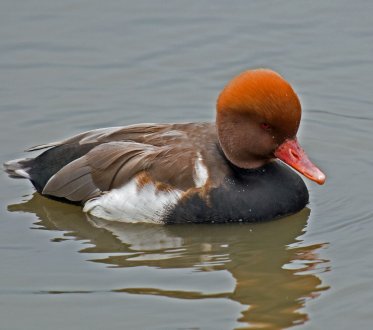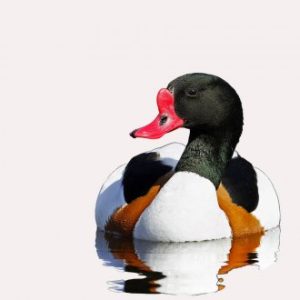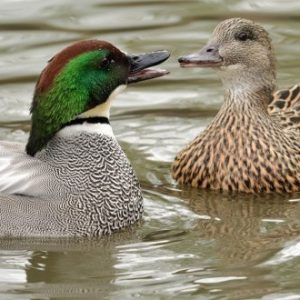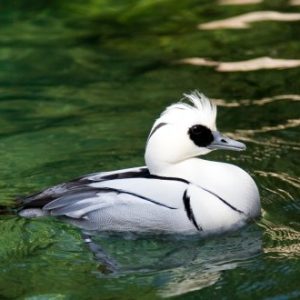Red Crested Pochard Ducks
Netta Rufina
Male Red Crested Pochard Ducks in breeding plumage are very striking and completely unmistakable. They have a very rounded orange-brown head with a red bill, bright red eyes, black breast, and a tawny-fawn-colored body. Females are more muted, but pretty, with a pale brown body and light lower facial markings and cheeks and dark upper facial markings and bill.
Range: Red Crested Pochard Ducks have a wide range and are scattered all across Europe, Asia, and North Africa. They are a somewhat migratory species, with more Northern birds wintering in southern locations including North Africa. Because of their popularity in captivity, there are many escaped members of the species mixing with wild populations.
Habitat: Red Crested Pochard Ducks are mostly seen in quiet and still waters and seem to prefer large lagoons, slow-flowing rivers, and peaceful lakes. They spend much of their time on the water or close to the water’s edge. They do gather in small groups and can be quite gregarious with one another, especially in the evening and early morning.
Status in the Wild: Common
Status in Aviculture: The striking beauty and active personalities of these ducks make them very popular in zoos and large avian collections. But Red Crested Pochard Ducks are currently quite uncommon in private collections.
Breeding: Female Red Crested Pochard Ducks build a nest by the side of the water usually under vegetation. The clutch consists of 8-12 pale greenish eggs. Incubation is 26-28 days by the female, who only leaves the nest to eat while the male remains close by. Toward the end of the incubation period, the male usually takes his leave, and the female raises the ducklings by herself. The ducklings take about 10 weeks until the first flight.
Lifespan: With good husbandry, Red Crested Pochard Ducks can live over 10 years old.
Size: These are large ducks, weighing 2-2.5 lbs and being about 22 inches in length.
Housing Requirements: Red Crested Pochard Ducks are considered ‘divers’ and are large diving ducks, which means that they require plenty of water for their active swimming habits. These ducks spend almost all of their lives swimming and diving. A natural pond would be perfect for these ducks to thrive, but netting or enclosing the pond may be necessary to keep them from flying away and to protect them from predators. Red Crested Pochards get along with other birds and are very easy to raise with other ducks and waterfowl.
Diet: These ducks are omnivorous, feeding on aquatic plant matter and aquatic invertebrates and small fish, mainly while diving or dabbling. The Red Crested Pochard also upends to eat more so than most diving-type ducks. A quality commercial duck pellet feed works well with these ducks. Combining a commercial diet with greens and providing access to aquatic vegetation and invertebrates would make an even more solid feeding plan.
Miscellaneous Notes: Male Red Crested Pochard Ducks are quite chivalrous. They are one of the only species of duck where the male dives down and brings food up as an offering for his mate swimming on the water surface.




